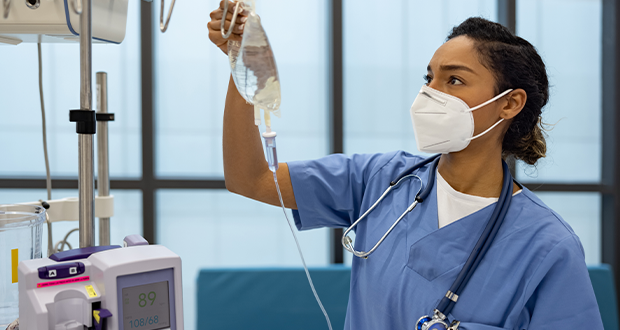From the use of robotics and artificial intelligence in surgery to wearable devices that physicians can use to monitor patients, it’s safe to say that the healthcare sector has come a long way over the last several years.
It's not only technological that's changing – workwear, especially for those in the nursing and aged care fields, has also gone through numerous evolutions.
Evolution of workwear
Today, medical scrubs are the norm for nurses and aged care workers but this hasn’t always been the case.
From the 1800s – when Florence Nightingale founded modern nursing – up to the 1990s, it was typical for nurses to wear dresses, sometimes with white caps and aprons added.
Starting in the late 90s and early 2000s, it became more common for nurses and other healthcare workers to wear scrubs – matching pants and tops, typically made from a blend of polyester and cotton, and only available in a few colours.
Today, there is much more variety for nurses and other caregivers.
The following are some of the latest uniform advancements made in the nursing and aged care sectors:
Care with flare
Long gone are the days of basic, wide-legged pants and tunic-type tops.
While those scrub styles still exist (and there’s nothing inherently wrong with them), there are plenty of other, more stylish and practical options to choose from as well.
For example, many scrub designers have introduced jogger-style pants with banded legs for a more fitted look and feel. They’ve also brought in a variety of patterns and colours to mix and match and create new outfits for every day of the week.
Antimicrobial solutions: Addressing hygiene challenges in healthcare
Naturally, hygiene and spreading germs are common concerns among healthcare workers – especially those working with aged and vulnerable populations.
In response to these concerns, some scrub manufacturers have recently introduced workwear made from antimicrobial fabrics, which help to prevent the spread of germs, and keep wearers and those they care for healthier.
But what makes fabric antimicrobial?
A common practice involves embedding silver alloy into the fabric – silver alloy prevents bacterial cells from dividing.
Manufacturers may also incorporate other protective elements into these fabrics, such as designing it to be waterproof or flame-resistant.
As a bonus, antimicrobial fabrics also tend to last longer, saving healthcare workers from investing in new scrubs as often.
Sustainability in workwear
Most medical scrubs are made from polyester and polyester-cotton blends, neither of which are particularly sustainable or eco-friendly materials.
Polyester can be derived from petroleum, and cotton requires extreme amounts of water to grow – over 2650 litres are used to produce enough cotton for one T-shirt.
To address these challenges, some manufacturers have started using alternative materials, such as bamboo or fabric made from recycled plastic bottles.
There has also been a more significant push for healthcare workers to recycle their scrubs instead of throwing them away when they wear out.
Donating or repurposing them into different items, such as cleaning cloths, helps to keep scrubs out of landfills.
Freedom to move
In the past, medical scrub designers tended to create the same style of scrubs for all wearers – even though everyone has different body types and clothing preferences.
Modern scrub manufacturers have finally started to branch out with different styles to accommodate a broader range of healthcare workers. They’ve acknowledged that medical workers don’t come in one shape and size.
Many manufacturers now make scrubs designed for extra-tall people and petite scrubs for those shorter than average.
They also feature a wide range of larger sized scrubs to ensure all wearers can find the appropriate fit.
Properly fitting scrubs allow nurses and aged care workers to move freely and do their jobs more efficiently and effectively.
How to choose the right scrubs
- Comfort is the number one factor to keep in mind when choosing scrubs. Try on a few different styles and fabric types to find one (or more) that fits the best and can be worn for hours at a time.
- Hospitals and aged care facilities can be pretty chilly – it’s critical to leave room for layering and avoid sacrificing mobility.
- It’s much easier to move around and care for patients when scrub tops feature side vents, allowing greater flexibility and preventing the tops from riding up.
- Drawstrings make scrubs more easily adjustable as they allow wearers to ensure their uniforms don’t dig in or slide down throughout a shift.
Steven John Cumper is the founder and the managing director of Medshop and founder of ScrubsIQ.
Do you have an idea for a story?Email [email protected]
 Aged Care Insite Australia's number one aged care news source
Aged Care Insite Australia's number one aged care news source

